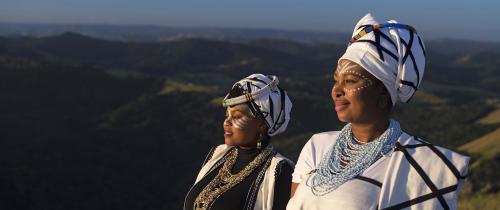Quick Summary
As one of the four Nguni tribes of South Africa, the AmaXhosa have a rich cultural heritage based on clans, storytelling, and ancestral traditions.
Xhosa customs reveal a deeply spiritual and socially cohesive way of life, ranging from colorful beaded attire to ceremonial rites of passage.
A detailed breakdown of Xhosa cultural practices, rituals, language, and fashion is detailed in this immersive guide.
Discovering the World of AmaXhosa
As a cultural explorer and someone who’s spent meaningful time with Xhosa families in the Eastern Cape, I can tell you that this culture isn’t something you simply observe — it pulls you in. The storytelling, the click-rich IsiXhosa language, the beads that speak volumes, and the dances that shake the soul — every detail carries purpose and ancestry. What stood out to me most was the deep reverence the AmaXhosa have for tradition and community. Here’s everything I learned — and why you should care too.
The Backbone of Xhosa Society: Clans, Tribes, and the Nation
The AmaXhosa are part of the larger Nguni group alongside the AmaZulu, AmaSwazi, and AmaNdebele. Within the Xhosa nation, society is structured through clans, which are larger familial groups sharing a common ancestry.
Understanding Clan Names
Each clan name traces back to a founding ancestor — think of it as the root of a sprawling family tree. For instance, “Radebe” is a clan name, while the tribe it falls under is “AmaHlubi.” These clan names are used in greetings, praise poetry, and rituals, and they help preserve ancestral lineage across generations.
The Power of Clicks: IsiXhosa Language and Oral Traditions
Learning IsiXhosa was an unforgettable experience for me. The language is musical, filled with click sounds represented by letters like X, Q, and C. I often stumbled at first, but with guidance from local storytellers, I began to appreciate the language’s rhythm and meaning.
Storytelling is central to Xhosa life. Every folktale, song, and dance conveys moral lessons, historical events, or spiritual beliefs. Music is used not just for entertainment but for teaching, healing, and celebrating milestones.
What We Wear Tells Who We Are: Xhosa Traditional Attire
The first time I witnessed a traditional ceremony, I was struck by the sheer elegance and symbolism in the clothing.
For Women
Xhosa women wear white dresses adorned with black bias binding. Married women add long aprons and cloaks — the full outfit is known as isikhakha. The headgear, often a mix of colorful fabrics, indicates the region of origin. They also carry a sling bag called inxili.
Beaded jewelry is an essential part of the look — elaborate collars, earrings, and necklaces made of vibrant beads tell stories of status, marital status, and tribal affiliation.
For Men
Men wear wraparound skirts that extend to their feet and throw long scarves over one shoulder. Headdresses, either beaded or fabric-based, differ across clans. These outfits blend practicality with cultural pride.
Strength and Spirituality: Stick Fighting and Life Rites
I watched boys training with sticks out in the veld, their movements fluid and precise. Stick fighting isn’t just play — it’s a rite of strength, defense, and discipline, learned during cattle herding and tied to the circumcision ritual.
Face Painting (Umchokozo)
Xhosa women paint their faces with white or yellow ochre, creating dot patterns across their brows, cheeks, and noses. These markings are artistic expressions and spiritual protectors, especially during ceremonies.
Living with Ancestors: Spirituality and Initiation Rites
The Xhosa believe in communicating with God through their ancestors. Each major life event is marked by a ritual:
Imbeleko (Birth Ritual)
This sacred ceremony introduces a newborn to the ancestors, seeking protection and guidance for the child.
Ulwaluko (Male Initiation)
Boys are circumcised at 18 in a traditional rite of passage. Covered in white ochre at the beginning and red ochre towards the end, they live in seclusion under the mentorship of elders who teach them about manhood, leadership, and identity.
Intonjane (Female Initiation)
Girls also undergo a transition ceremony that prepares them for womanhood, emphasizing morality, maturity, and family life.
From Union to Farewell: Marriage and Funeral Traditions
When I attended a traditional wedding negotiation, it was a moving experience. The groom’s family approaches the bride’s with respect, offering lobola (dowry) as gratitude. The ceremony that follows blends celebration with symbolism — the bride leaves her home to join a new family line.
Rituals of Death
Death is not the end, but a return. When a family head dies, a bull is slaughtered at his funeral. A year later, another bull is sacrificed to bring his spirit back home. Mourning lasts a full year, with women wearing black or traditional clothing. Men wear symbolic black cloth on their clothing. The mourning ends with a cleansing ritual.
Planning a Visit to the Eastern Cape?
If you’re curious to explore Xhosa culture in person, head to the Eastern Cape, especially regions like Mthatha or Qunu, where Xhosa heritage is still vividly alive.
Frequently Asked Questions (FAQs)
What language do the Xhosa speak?
The Xhosa speak IsiXhosa, a click-based Bantu language rich in oral tradition.
What is the purpose of face painting in Xhosa culture?
Face painting, or umchokozo, serves spiritual and artistic purposes, particularly during rites of passage.
What is the significance of the circumcision ritual?
It’s a rite of passage from boyhood to manhood, involving spiritual mentoring and traditional teachings in the bush.
How do Xhosa people honor their ancestors?
Through rituals like imbeleko (birth), ulwaluko (circumcision), and animal sacrifices during funerals and commemorations.
Can I visit a Xhosa community as a tourist?
Yes, many guided cultural tours exist in the Eastern Cape. Always go with a licensed guide and approach with respect and openness.




